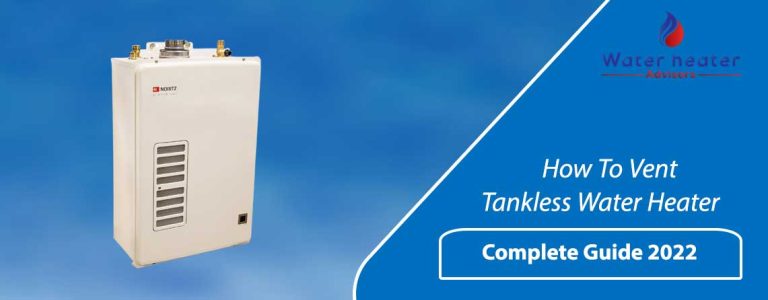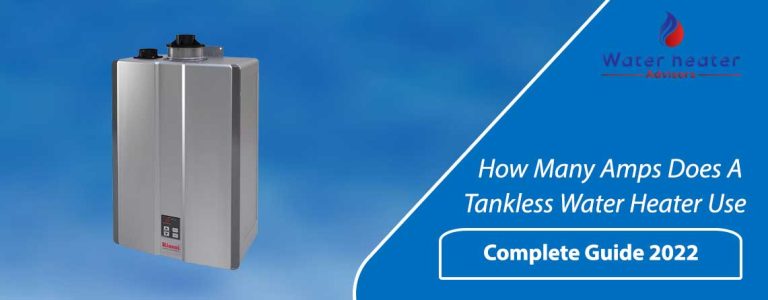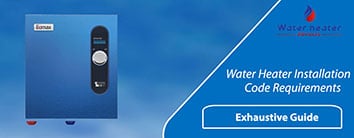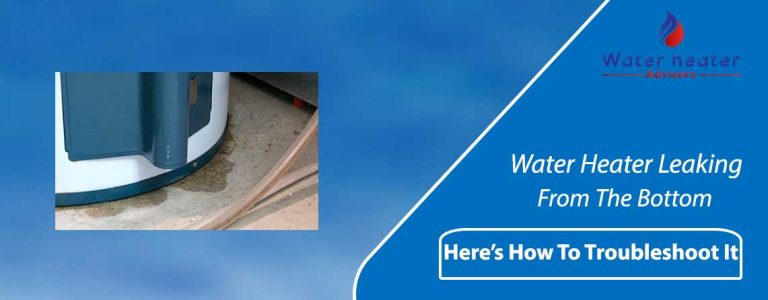How To Drain A Water Heater – 10 Right Ways 2021
Are you looking for a detailed guide on how to drain a water heater without drain valve because sediment has accumulated on the bottom of your heater’s tank?
Many water heating devices feature a big container to guarantee there is a sufficient amount of warm water throughout the day for numerous purposes in the whole house.
Over time, minerals, sand, grit, and other particles in the water can gather in the boiler’s bottom.
This sediment accumulation can drastically decrease the unit’s efficiency and capacity as well.
Furthermore, it forces the machine to work harder to heat the water, consumes more electricity, and costs more money to operate.
It can also plug the drain and block the continuing maintenance, which eventually leads to early failure.
Draining a tankless water heater every 6 or 12 months to eradicate sediment is a stress-free DIY task that takes just one or two hours and just a few basic gears.
In this guide, we are going to give you step-by-step instructions on how to drain a water heater with no floor drain yourself.
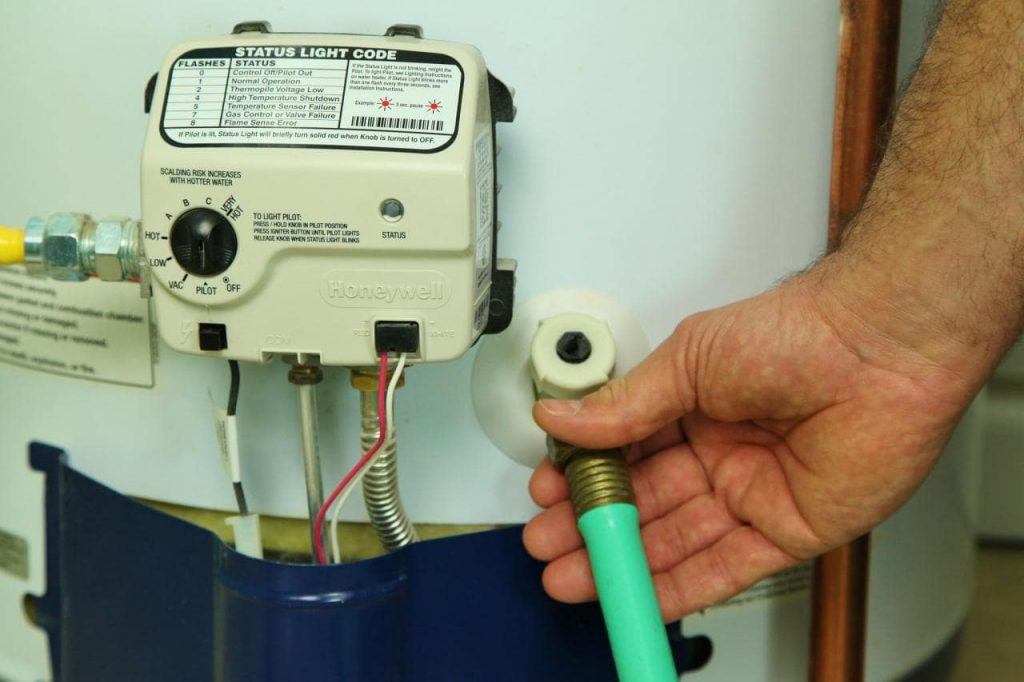
Why It Is Critical To Drain A Water Heater?
Draining a unit is an essential part of its regular maintenance. Annual draining improves its performance and lowers the running expenditures.
Over time, sediment gathers in the appliance’s bottom, which leads to clogging. If you don’t drain it frequently, sediment will solidify.
This corpus generates a permanent barrier and the warmth from the burner flame takes a long time to reach the water in the container.
Burner rounds increase and use more electricity or gas until the boiler becomes useless and should be changed.
Therefore, you should drain to flush out the residue, usually made of minerals and other particles, to help it function competently.
When Should You Drain The Water Heater?
The sediment accretion can cause the following problems in the water heaters:
- Corrosion of the container that leads to small or big leaks
- Less warm water supply
- Trouble heating water
- Increased water and electricity/gas bills
- Cracking noises from air stuck in the sediment
When Should You Not Drain The Water Heater?
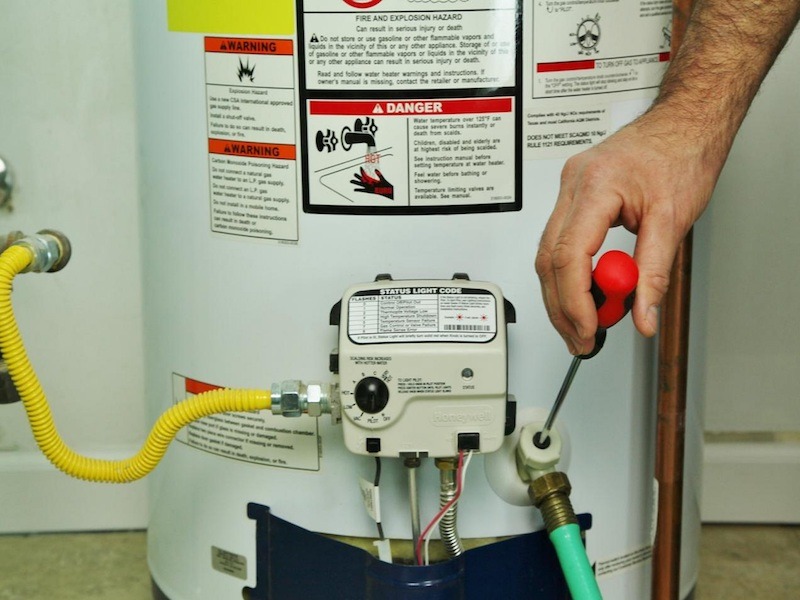
While how to drain electric water heater is not a straightforward DIY errand, and there are some situations where you should never do this.
This first situation is if you have never drained a unit and are not comfortable performing this job.
In such a scenario, you should always hire a professional maintenance service because you would not want to risk damage to your appliance or residence.
Secondly, when you don’t drain it for several years, the residue relocates the water and produces hot spots on the bottom of the boiler.
The burner flame overheats the container in these parts and over time, breaks down the substances.
The breakdown forms small holes and sediment seals those holes. If you drain your unit after several years of sediment accumulation, chances are that within 2 to 3 days, leaks will occur.
How Often Should You Drain A Water Heater?
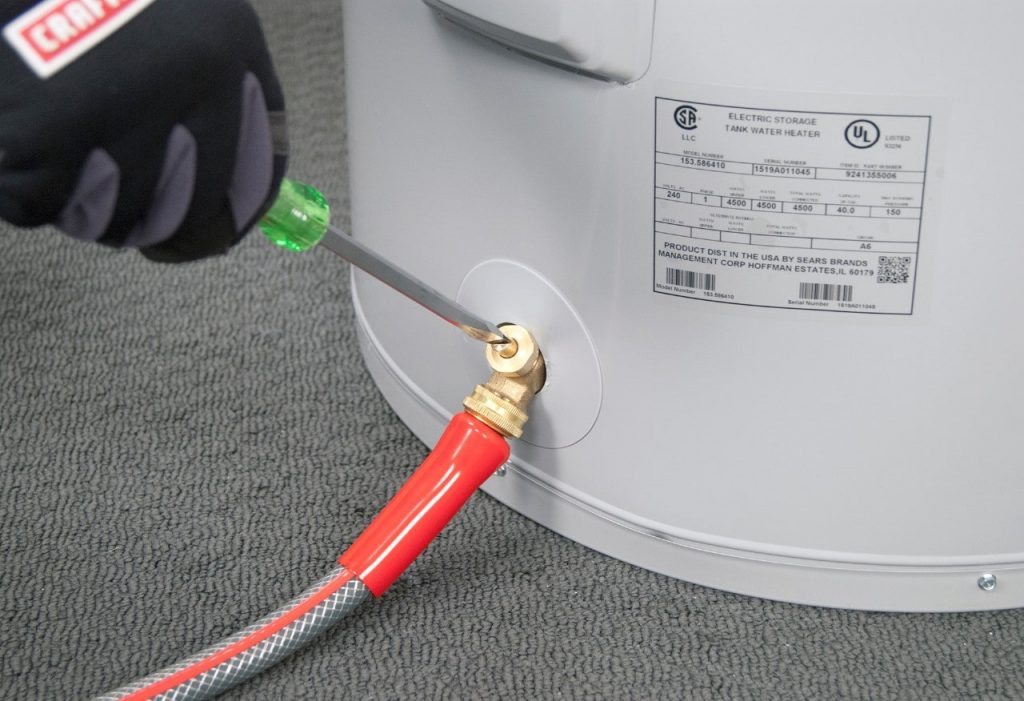
How often should you drain it is reliant on how hard the water is in your area.
The harder the water is, the more minerals it will contain and the swifter sediment will gather in your boiler.
As a rule of thumb, you should drain your water heater once a year.
If you hire an annual maintenance service, you don’t have to drain and flush the heater yourself because this errand is an important part of their service.
If your water is very hard, you should drain your tank every 3 months to prevent sediment buildup.
If you are unsure when you should drain it, check your user manual.
Important Things To Consider Before Starting The Draining Task
Before starting the draining job, you should know where the main water shutoff valve of your house is situated.
You won’t need it while draining, but it is better to know about its location when working with any sort of plumbing fittings in your household because you never know when things can go wrong and you need to discontinue the water from traveling through the pipelines.
Safety Concerns
The process of how to drain a water heater fast involves working with extremely hot water.
Therefore, we would advise you to deactivate your device a few hours before you start to allow the water in the container to cool off.
If you can’t do this, take advantage of durable rubber work gloves to safeguard your hands from the hot water and also wear glasses to shield your eyes from the drops of water.
Tools That You Will Need
- Bucket
- Garden hose
How To Drain A Water Heater Fast?
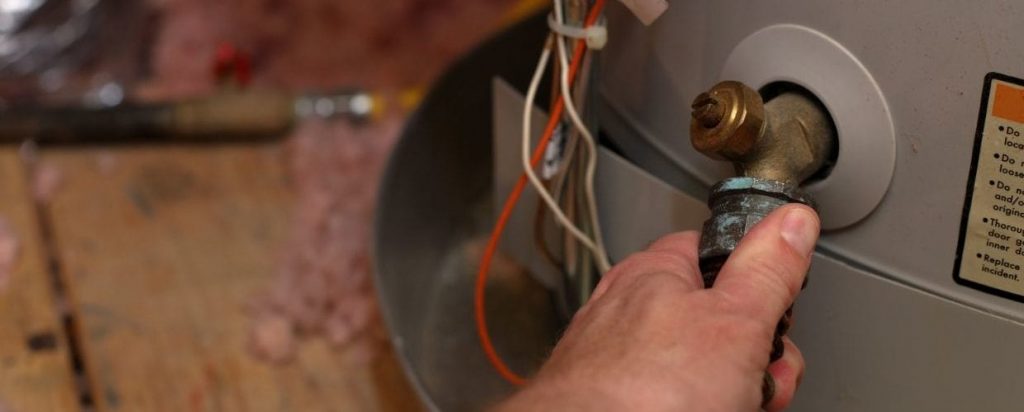
- Quickly Flush The Water Heater
Before turning your water heater off, take a garden hose, attach it to the drain valve, and flush your unit’s container while the water pressure is on.
For this purpose, you will have to open the drain valve for some time and then close it.
The water pressure will eliminate any sediment jammed in the drain valve and aid the boiler drain quicker.
If sediment comes out, you can flush your tank a couple of times. You have to run the hose into the bucket or an outdoor location to catch the sediment and water that will come out.
2. Turn Off Water Connection And Water Heater
The first step of how to drain an electric water heater is to switch off your device and water connection.
If you have a gas machine, you have to turn the handle to pilot, whereas if you have an electric appliance, locate the circuit breaker that controls it and turn it off.
Most of the time, it has a dedicated breaker for the heater.
Furthermore, you also have to shut off the cold water that flows into the container by turning the handle at the tank’s top counterclockwise.
Once your unit is shut off, wait for a few hours for the water inside the tank to cool down before moving to the next step.
3. Open The Drain Valve
The next step of how to drain a water heater tank is to give the water present in the tank a track to exit.
If your appliance is elevated or positioned on a higher floor in your residence, it can be as straightforward as running a garden hose from the machine to an excellent draining area in the exteriors.
If your water is in the basement, you can either rely on the bucket or acquire a pump and connect the hose line to pump the water up and then out.
If you are interested in using a bucket, make sure to wait for the water present inside the boiler to cool down before you release it because you can get splashed during the process.
4. Inspect The Pressure Relief Valve
Now, it is the right time to check the pressure relief valve. This valve is responsible for releasing pressure in the boiler.
To do so, flip the handle on the valve, you can find it on the cold water line that fills the container.
If you hear a hiss and notice some water erupting out, it means the valve is working perfectly.
By the way, you should do this with a rag or bucket.
If you don’t hear any hiss or see water, it means it is not working properly.
Call a technician so that he can examine the valve and if required, replace it.
5. Open Warm Water Faucet
Now, you have to open the warm water faucet that is closer to the device.
It is better if it is above the floor because it will alleviate pressure in the heater, permitting the water to drain rapidly from the container.
6. Open The Drain Valve
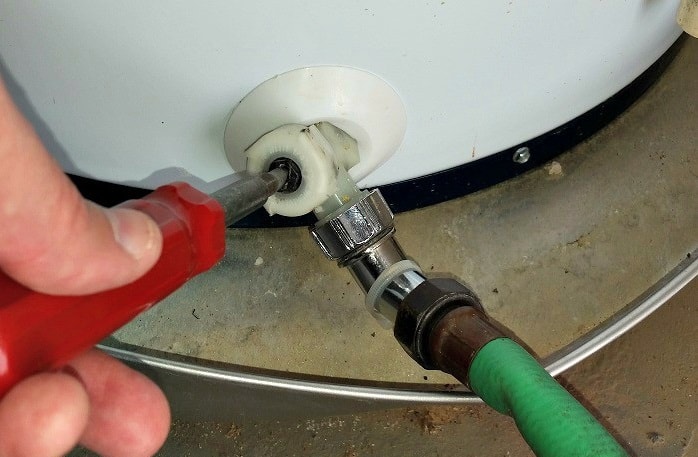
Now, prepare your bucket or pump and open the drain valve and let the water drain from the system.
As we mentioned before, the water will be extremely hot, so work carefully.
Once the water has drained, activate the supply of cold water to the heater to stir up residual sediment.
Repeat this procedure until the water becomes clear.
7. Flush The Tank
After draining your tank completely, turn on the water for a few seconds, flush your heater, and then again allow it to drain.
When the water becomes clear, you will be sure that you have eradicated all the sediment from the tank.
8. Refill The Tank
After fully flushing the heater, turn off the drain valve.
Also, confirm the pressure relief valve is closed and then activate the cold water supply at the tank’s top.
Go to the water heater stoppers you opened previously and allow the water to travel through them. After that, turn off the stoppers.
9. Turn On The Heater
If you have a gas unit, relight its pilot. However, if you have an electric device, turn its power back on. After 1 or 2 hours, you will have warm water for your daily needs.
10. Examine The Drain Valve
The last step of how to drain a gas water heater is to check the drain opening once it is closed completely to guarantee there are no leaks. If it did not close thoroughly, put a cap over the outlet’s hose thread to stop the leak, otherwise, you can replace it.
Conclusion
Now, you know how to drain a water heater that is clogged. If you are certain that you can drain your device yourself, then jump into the process, otherwise, we would recommend you to hire professional services.

